
The Philippine National Anthem embodies everything that is Filipino. It epitomizes the spirit of the Filipino people, their hopes, dreams, ideals, and their love and affection for their country — the Philippines.
Learning the words of Lupang Hinirang (Chosen Land) isn’t only about memorizing the song so that you’re not left out when everyone is singing it during appropriate occasions. Learning the Philippine National Anthem is also learning about and loving the rich history of the Philippines and appreciating the struggles of its people in the past.
This guide features the Philippine National Anthem, its history, its words, and its significance to the Filipino people and even to those who wish to learn the Filipino language and the Philippine culture.
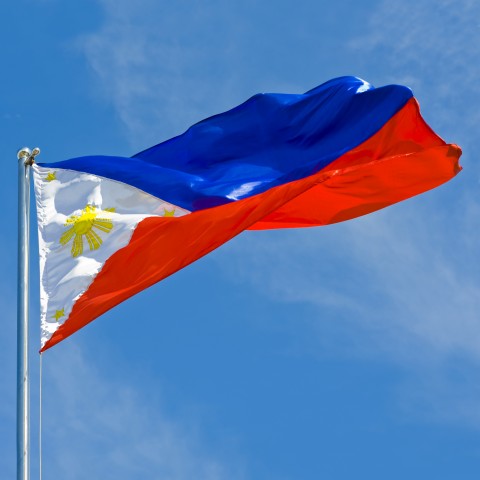
 Table of Contents
Table of Contents
- The Words to the Anthem
- A Little Bit of History
- How to Sing the Philippine National Anthem
- Interesting Facts about the Philippine National Anthem
- How FilipinoPod101 Can Help
1. The Words to the Anthem
Throughout the history of the Philippines, official status has been given to three versions of the anthem, which are Spanish, English, and Filipino. However, only the Filipino version is currently recognized by law.
According to the Flag and Heraldic code, which was approved in 1998, the only language that can be used to sing the Philippine National Anthem is Filipino, and violation of this law is punishable by a fine or even imprisonment. Can you sing the Spanish and English versions of Lupang Hinirang? Of course, you can, but not in public and not for official reasons.
Below are the lyrics to the Philippine National Anthem and beside each line is a literal translation of the words.
| Filipino | Literal English Translation |
| Bayang magiliw Perlas ng Silanganan Alab ng puso Sa dibdib mo’y buhay Lupang hinirang Duyan ka ng magiting Sa manlulupig Di ka pasisiil Sa dagat at bundok Sa simoy at sa langit mong bughaw May dilag ang tula At awit sa paglayang minamahal Ang kislap ng watawat mo’y Tagumpay na nagniningning Ang bituin at araw niya Kailan pa ma’y di magdidilim Lupa ng araw ng luwalhati’t pagsinta Buhay ay langit sa piling mo. Aming ligaya Na pag may mang-aapi Ang mamatay nang dahil sa iyo | Loving country The Pearl of the Orient The flame of the heart In your heart is alive Chosen land You are the cradle of the brave By the invaders, You won’t allow yourself to be oppressed The seas and mountains The breeze and your azure skies The poem is splendid Also is the song of the freedom that you adore The sparkle in your flag Is shining triumphantly And its star and sun Will never grow dim Land of the sun of glory and passion Life is heaven in your arms Our joy when someone comes to oppress you Is to die because of you |
| Spanish Version | English Translation from Spanish |
| Tierra adorada, Hija del sol de Oriente, Su fuego ardiente En ti latiendo está. Tierra de amores, Del heroísmo cuna, Los invasores, No te hollarán jamás. En tu azul cielo, en tus auras, En tus montes y en tu mar, Esplende y late el poema De tu amada libertad. Tu pabellón, que en las lides, La victoria iluminó, No verá nunca apagados Sus estrellas y su sol. Tierra de dichas, de sol y amores, En tu regazo dulce es vivir. Es una gloria para tus hijos, Cuando te ofenden, por ti morir. | Land of the morning, Child of the sun returning, With fervor burning Thee do our souls adore. Land dear and holy, Cradle of noble heroes, Ne’er shall invaders Trample thy sacred shores. Ever within thy skies and through thy clouds, And o’er thy hills and seas, Do we behold the radiance, feel the throb Of glorious liberty. Thy banner dear to all our hearts, Its sun and stars alight, Oh, never shall its shining fields Be dimmed by tyrant’s might! Beautiful land of love, o land of light, In thine embrace ’tis rapture to lie, But it is glory ever, when thou art wronged, For us, thy sons to suffer and die. |
You can also check out this video of the Philippine National Anthem produced by one of the country’s leading broadcasting networks in 2013.
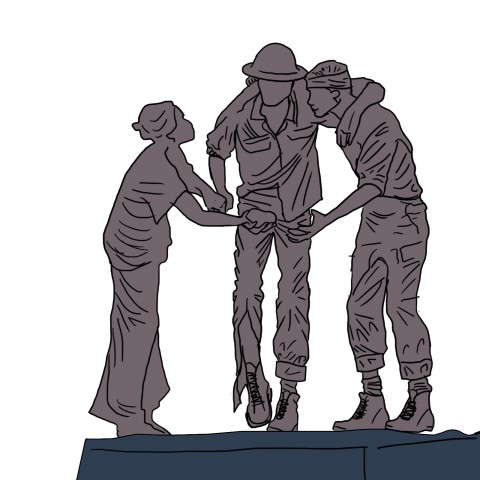
Duyan ka ng magiting. (You are the cradle of the brave.”)
- ➜ We can’t discuss the Philippine national anthem without talking about the well-known Filipino historical figures who made a huge impact on the revolution. This lesson will introduce you to them.
2. A Little Bit of History
Like many other national anthems, Lupang Hinirang was a product of a revolution. It was born as a response to the needs of the 1898 revolution against the Spanish colonizers.
In a desire to rally the Filipino people against the oppressors, then-president Emilio Aguinaldo commissioned pianist and composer Julian Felipe, a fellow Caviteño, to create a revolutionary march.
The musical piece was then entitled Marcha Filipina-Magdalo, which translates to “The Philippine-Magdalo March,” with Magdalo referring to the Magdalo chapter of the Katipunan in Cavite. It is said that the march was based on Marcha Real, Spain’s national anthem, and Le Marseillaise, the national anthem of France.
The anthem went through several changes over the decades. The title of the march was later changed to Marcha Nacional Filipina or “Philippine National March” in 1938.
A call to translate the lyrics to the national language was made two years later, and while several versions were created in the years to follow, it was Lupang Hinirang written by Felipe Padilla de León that was eventually recognized as the lyrics to the country’s national anthem in 1958.
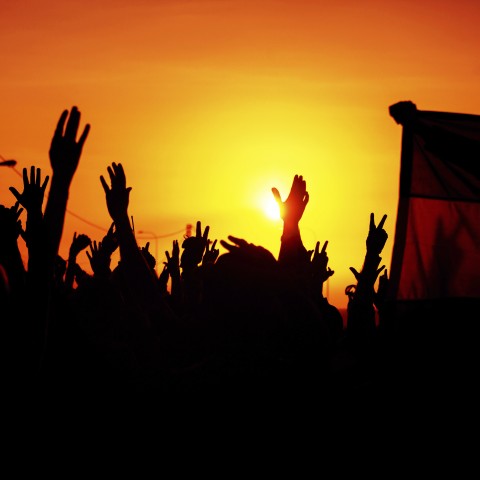
“Lupang Hinirang was a product of a revolution.”
- ➜ The history of Lupang Hinirang is one evidence of how strong the Spanish influence is on Philippine culture. This lesson will show you how it affected the Filipino language as a whole.
3. How to Sing the Philippine National Anthem
1- The Place and Time for Playing and Singing Lupang Hinirang
The National Historical Commission of the Philippines, an agency that promotes Philippine history and cultural heritage, prohibits the singing or playing of Lupang Hinirang for mere entertainment or recreation.
However, Republic Act No. 8491, also known as the Flag and Heraldic Code of the Philippines, states that the national anthem can be played during international competitions where the country is the host or has a representative. It also allows the playing of the national anthem during local competitions.
That said, the Philippine National Anthem is played in the Olympics and other national and international sporting events.
One of the largest sporting events where it is popularly heard is boxing, featuring the pride of Philippine boxing, Manny Pacquiao. Famous local and international singers who have performed the national anthem in such an event include Sarah Geronimo, Regine Velasquez, Martin Nievera, Arnel Pineda, and Jessica Sanchez.
Meanwhile, here’s an excerpt from section 38 of Republic Act No. 8491 citing a few specifics on when and when not to play the Philippine National Anthem:
The anthem shall not be played and sung for mere recreation, amusement or entertainment purposes except on the following occasions:
a. International competitions where the Philippines is the host or has a representative;
b. Local competitions;
c. During “signing off” and “signing on” of radio broadcasting and television stations;
d. Before the initial and last screening of films or before the opening of theater performances; and
e. Other occasions as may be allowed by the Institute.
In the Philippines, the most common occasion that the anthem is played is during flag ceremonies in schools, government offices, and other establishments, including malls. It’s also a common practice among broadcast stations to play the anthem when signing in and signing off the airwaves.
And if you have ever watched a live theater performance in the Philippines or watched a film inside a movie house, you have also probably observed the national anthem being played before the initial and last screening of the program.
2- What You Should Do When You Hear Lupang Hinirang
Foreigners are not obliged to sing the Philippine National Anthem when they hear it being played, although they are expected to show respect to the Philippine flag by acknowledging it. That means standing with the rest of the crowd and facing the source of the music and not doing anything that seems to display mockery or contempt.
If you know how to sing Lupang Hinirang, then that would be a plus. Meanwhile, official Filipino citizens are obliged to sing it with great fervor with their right palm placed over the left side of their chest where the heart is.
On the other hand, uniformed personnel, including military, police, and security guards should salute the flag according to their regulations.
You are supposed to face the Philippine flag during the playing of Lupang Hinirang, but on some occasions where only the music is played, you should face toward the source of the music as has already been mentioned.
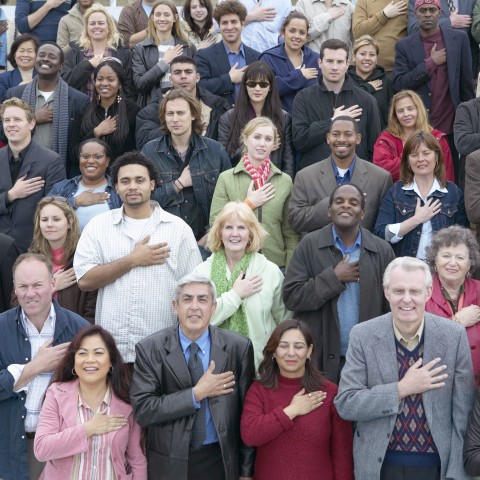
- ➜ Manners play a huge role in the proper observance of the Philippine National Anthem. Be sure to check out our 3-minute lesson on Filipino manners.
4. Interesting Facts about the Philippine National Anthem
You now know the history of the Philippine National Anthem, how the music was composed and how the words were written. Now, let’s take a look at a few interesting facts about the anthem that you may not be aware of already.
- The lyrics to Lupang Hinirang were originally written as a Spanish poem entitled Filipinas with the alternative title Tierra Adorada. The poem was created by Jose Palma for publishing in the La Independencia newspaper during its first anniversary on September 3, 1899.
- When the Americans arrived in the Philippines, a prohibition under the Flag Act of 1907 was made, banning the use of the composition. The law was rescinded in 1919, which allowed the Commonwealth Act No. 382 to adopt Marcha Nacional Filipina as the country’s national anthem on September 5, 1938.
- In the same year, the government ordered the anthem to be translated to English during the American regime, considering that there were more people now who spoke English than Spanish. The most notable and memorable version that was created was that of Camilio Osias and A.L. Lane. It was called “Land of the Morning.” The translation was eventually made the official lyrics for the Philippine National Anthem.
- During the 1940’s many Filipinos began arguing that the national anthem shouldn’t be sung in “the language of invaders.” This was the time when Filipinos were debating about what the national language of the Philippines should be. As a result, several translations of the hymn into Tagalog were created, the first one being Diwa ng Bayan, which when translated meant “Spirit of the Country.”
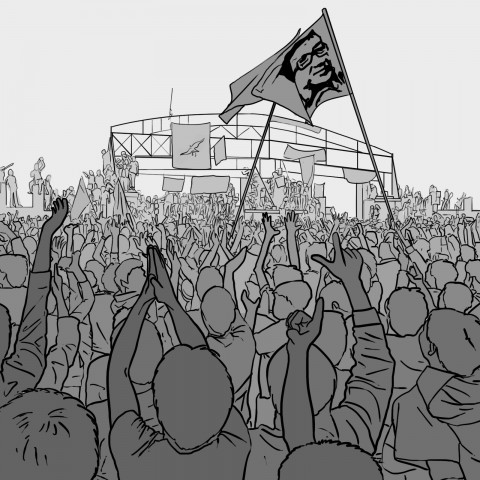
Ang mamatay ng dahil sa’yo… (“to die because of you…”)
5. How FilipinoPod101 Can Help
Learning a language only becomes worthwhile when you’re also learning about the history of the country where that language is spoken. In this case, you have learned about one of the most important aspects of Philippine history — the Philippine National Anthem.
This guide has shown you how Lupang Hinirang came to be, how rich its history is, what laws are associated with it in recent times, and what role it plays in the lives of the Filipino people. The lyrics alone will give you goosebumps. Even if you’re not Filipino by blood, singing it with other Pinoys will give you a sense of pride and patriotism. That’s how powerful Lupang Hinirang is.
You know what will instill more sense of Filipino pride in you? Mastering the Filipino language. And if there’s one way you can do that, it’s by being a part of the FilipinoPod101 family. Sign up today for a free lifetime account and gain access not only to lessons on Filipino grammar, vocabulary, pronunciation, or correct sentence structure but also to lessons about the culture and history of the Philippines.
Want to take your learning to another level? Try MyTeacher, an exclusive feature that offers one-on-one coaching with an actual professional Filipino teacher. What are you waiting for? Join FilipinoPod101 today and enjoy free and exclusive learning resources designed to help you reach fluency faster!









